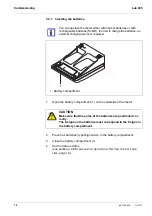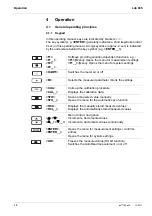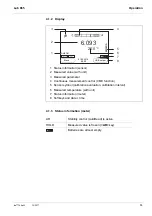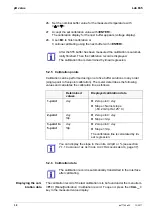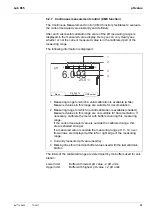
pH value
Lab 865
24
ba77145e02
12/2017
5.2
Calibration
5.2.1 Why calibrate?
pH electrodes age. This changes the zero point (asymmetry) and slope of the
pH electrode. As a result, an inexact measured value is displayed. Calibration
determines and stores the current values of the zero point and slope of the
electrode.
Thus, you should calibrate at regular intervals.
5.2.2 When do you have to calibrate?
After connecting a sensor
Routinely within the framework of the company quality assurance
When the calibration interval has expired
5.2.3 Automatic calibration (AutoCal)
Make sure that in the sensor menu,
Buffer
menu, the buffer set is correctly
selected (see 7.1.1 C
37;
Use any one to five buffer solutions of the selected buffer set in ascending or
descending order.
Below, calibration with buffers () is described. When other buffer sets are used,
other nominal buffer values are displayed. Apart from that, the procedure is
identical.
If single-point calibration was set in the menu, the calibration proce-
dure is automatically finished with the measurement of buffer solu-
tion 1 and the calibration record is displayed.
1.
Connect the pH electrode to the meter.
2.
Keep the buffer solutions ready.
When measuring without temperature sensor:
Temper the buffer solutions or measure the current temperature.
3.
In the measured value display, select the measured parameter pH or mV
with
<M>
.
4.
Start the calibration with
<CAL>
.
The calibration display for the first buffer appears (voltage display).

